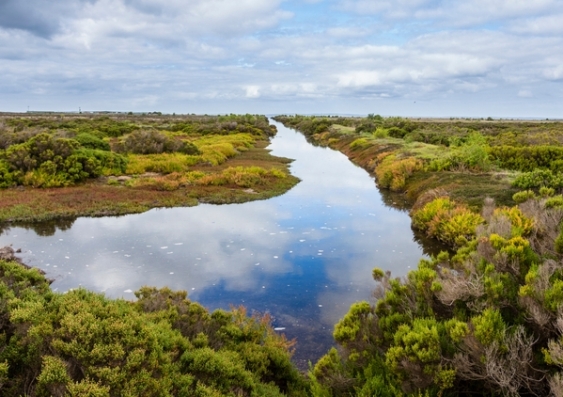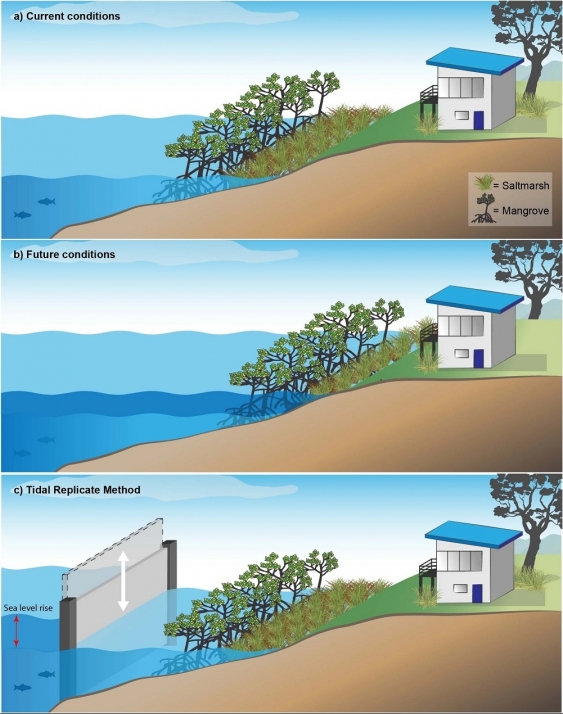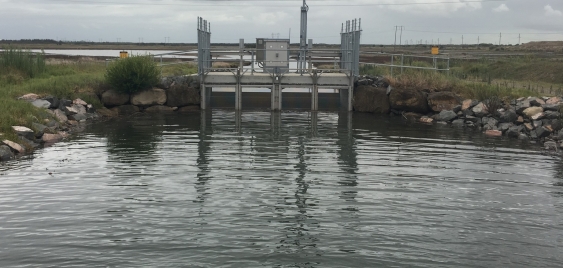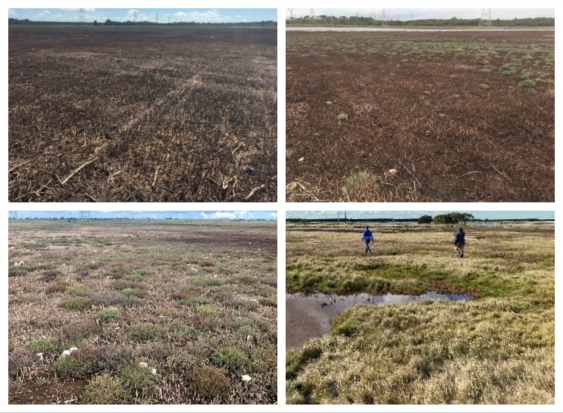Recreating the perfect tide to protect coastal wetlands from rising sea levels
Eco-engineering development from UNSW Sydney could revive saltmarsh and mangrove wetland areas valued at around $US230b globally.
Eco-engineering development from UNSW Sydney could revive saltmarsh and mangrove wetland areas valued at around $US230b globally.

Engineers from UNSW Sydney have designed and built a system that biomimics tides to help restore vital coastal wetlands.
Wetland areas are under severe risk from climate change and subsequent rises in sea levels, with some projections indicating that up to 35 per cent of current wetlands across the globe may be lost in the next 80 years.
But a team led by Associate Professor Will Glamore, from the Water Research Laboratory within UNSW Engineering, has shown that such areas can not only be saved but also restored to former glory by their innovative ‘Tidal Replicate Method’ that is then connected to a SmartGate.
The Tidal Replicate Method is an algorithm that mimics tides that have been calculated to create the best ecological conditions for the specific wetland area.
It then controls gates, which are around 2.5m wide and 2m tall and are positioned in the tidal channels that connect the wetlands to the river. They move up and down to allow certain amounts of water onto the wetland.

Illustration to show how the Tidal Replicate Method and SmartGate system can protect coastal wetland areas from the threat of rising sea levels.
In a paper published by Scientific Reports, lead author Dr Mahmood Sadat-Noori states the system could be ideal for 32 locations across the world that have been designated as Ramsar sites – rare and unique wetland areas officially designated as being of international importance due to their biological diversity.
“These wetland ecosystems are vital to the ecological functioning of estuaries and provide many important ecosystem services, such as the provision of habitat, critical sources of food for fisheries, flood and coastal protection and also as an enormous carbon storage area,” A/Prof. Glamore says.
“Wetland sites collect more carbon than the Amazon rainforest on a per metre basis, and that is because they don’t produce methane. In the Amazon and every freshwater site in the world, the carbon goes in, but methane comes out and that lowers the net result.
“But in coastal wetlands they don’t produce the methane and that process is known as Blue Carbon.
“So this Tidal Replicate Method solution can play an important role not only in the global effort to conserve coastal wetlands, but also to reduce carbon in the atmosphere.”

The Tidal Replicate Method and SmartGate system, designed by a team from UNSW with research funding from NCIG, was installed at a location on Kooragang Island and revived coastal wetland areas in the Hunter River estuary.
In the Scientific Reports paper, the UNSW team highlighted impressive results over a three-year period using the Tidal Replicate Method and SmartGate system installed at a location on Kooragang Island, in the Hunter River estuary just north of Newcastle in NSW.
They recorded total saltmarsh vegetation cover in the area rising from 0.2% in November 2017 to 45% by December 2020 after installation and implementation of their system.
Field sampling showed that one particular species of coastal shrub, Sarcocornia quinqueflora, increased its coverage by 50% over the trial period.
In addition, a similar project at the nearby Tomago Wetlands site – a Ramsar-listed area spread over 400 hectares – has delivered similar outcomes in terms of saltmarsh growth, as well as increased numbers of migratory shorebirds.

Photos showing the saltmarsh vegetation growth at Kooragang Island in February 2017 (top left), August 2018 (top right), August 2019 (bottom left) and December 2020 (bottom right).
A/Prof Glamore hopes the system could be implemented at Ramsar sites across the world that have been identified as geometrically and geographically suited for the SmartGate system linked to the Tidal Replicate algorithm. Those sites total more than 1.18 million hectares and have been estimated to have an annual ecosystem services value of $US230b ($295b).
“Land isn’t just worth what you might pay for it,” A/Prof. Glamore says, noting that 2021 marks the start of the ‘Decade of Ecosystem Restoration’ as declared by the United Nations.
“These wetland areas have the ability to store carbon, they reduce flooding in other areas where people live, they promote tourism with people coming to look at the birds and other wildlife, and they are an area that can produce a lot of prawns.
“All of that has a value that can be calculated and I think there is an easy cost-benefit outcome comparing that to the cost of installing a SmartGate to protect those areas. We have done those studies and the benefits are obvious, sometimes as high as seven-to-one.
“We specifically focused on possible implementation at Ramsar sites because those are the most important, with the highest value and ones where governments have already committed to looking after them.”